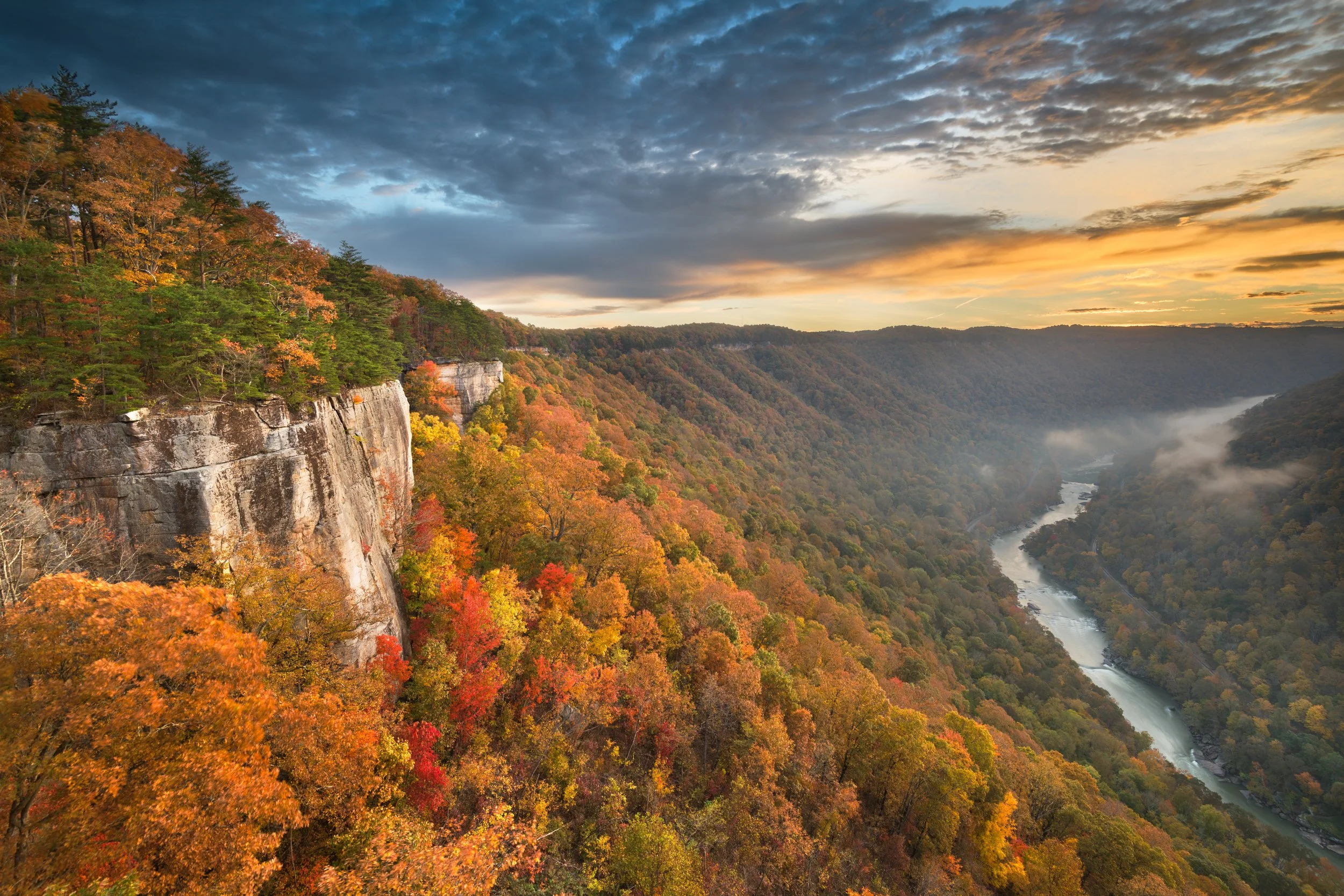Zach Clanton’s Climbing Grief Fund Story
by Hannah Provost
Photos by AAC member Zach Clanton
Originally published in Guidebook XIII
I.
Zach Clanton was the photographer, so he was the last one to drop into the couloir. Sitting on the cornice as he strapped his board on, his camera tucked away now, his partners far below him and safe out of the avalanche track, he took a moment and looked at the skyline. He soaked in the jagged peaks, the snow and rock, the blue of the sky. And he said hello to his dead friends.
In the thin mountain air, as he was about to revel in the breathlessness of fast turns and the thrill of skating on a knife’s edge of danger, they were close by—the ones he’d lost to avalanches. Dave and Alecs. Liz and Brook. The people he had turned to for girlfriend advice, for sharing climbing and splitboarding joy. The people who had witnessed his successes and failures. Too many to name. Lost to the great allure, yet ever-present danger, of the big mountains.
Zach had always been the more conservative one in his friend group and among his big mountain splitboard partners. Still, year after year, he played the tricky game of pushing his snowboarding to epic places.
Zach is part of a disappearing breed of true dirtbags. Since 2012, he has lived inside for a total of ten months, otherwise based out of his Honda Element and later a truck camper, migrating from Alaska to Mexico as the seasons dictated. When he turned 30, something snapped. Maybe he lost his patience with the weather-waiting in Alaska. Maybe he just got burnt out on snowboarding after spending his entire life dedicated to the craft. Maybe he was fried from the danger of navigating avalanche terrain so often. Regardless, he decided to take a step back from splitboarding and fully dedicate his time to climbing, something that felt more controllable, less volatile. With rock climbing, he believed he would be able to get overhead snow and ice hazards out of his life. He was done playing that game.
Even as Zach disentangled his life and career from risky descents, avalanches still haunted him. Things hit a boiling point in 2021, when Zach lost four friends in one season, two of whom were like brothers. As can be the case with severe trauma, the stress of his grief showed up in his body—manifesting as alopecia barbae. He knew grief counseling could help, but it all felt too removed from his life. Who would understand his dirtbag lifestyle? Who would understand how he was compelled to live out of his car, and disappear into the wilderness whenever possible?
He grappled with his grief for years, unsure how to move forward. When, by chance, he listened to the Enormocast episode featuring Lincoln Stoller, a grief therapist who’s part of the AAC’s Climbing Grief Fund network and an adventurer in his own right—someone who had climbed with Fred Beckey and Galen Rowell, some of Zach’s climbing idols—a door seemed to crack open, a door leading toward resiliency, and letting go. He applied to the Climbing Grief Grant, and in 2024 he was able to start seeing Lincoln for grief counseling. He would start to see all of his close calls, memories, and losses in a new light.
Photo by AAC member Zach Clanton
II.
With his big mountain snowboarding days behind him, Zach turned to developing new routes for creativity and the indescribable pleasure of moving across rock that no one had climbed before. With a blank canvas, he felt like he was significantly mitigating and controlling any danger. There was limited objective hazard on the 1,500-foot limestone wall of La Gloria, a gorgeous pillar west of El Salto, Mexico, where he had created a multi-pitch classic called Rezando with his friend Dave in early 2020. Dave and Zach had become brothers in the process of creating Rezando, having both been snowboarders who were taking the winter off to rock climb. On La Gloria, it felt like the biggest trouble you could get into was fighting off the coatimundi, the dexterous ringtail racoon-like creatures that would steal their gear and snacks.
After free climbing all but two pitches of Rezando in February of 2020, when high winds and frigid temperatures drove them off the mountain, Zach was obsessed with the idea of going back and doing the first free ascent. He had more to give, and he wasn’t going to loosen his vise grip on that mountain. Besides, there was much more potential for future lines.
Dave Henkel on the bivy ledge atop pitch eight during the first ascent of Rezando. PC: Zach Clanton
But Dave decided to stay in Whistler that next winter, and died in an avalanche as Zach was in the process of bolting what would become the route Guerreras. After hearing the news, Zach alternated between being paralyzed by grief and manically bolting the route alone.
In a world where his friends seemed to be dropping like flies around him, at least he could control this.
Until the fire.
It was the end of the season, and his friend Tony had come to La Gloria to give seven-hour belays while Zach finished bolting the pitches of Guerreras ground-up. Just as they touched down after three bivvies and a successful summit, Tony spotted a wildfire roaring in their direction. Zach, his mind untrained on how fast forest fires can move, was inclined to shrug it off as less of an emergency than it really was. Wildfire wasn’t on the list of dangers he’d considered. But the fire was moving fast, ripping toward them, and it was the look on Tony’s face that convinced Zach to run for it.
In retrospect, Zach would likely not have made it off that mountain if it weren’t for Tony. He estimates they had 20 minutes to spare, and would have died of smoke inhalation if they had stayed any longer. When they returned the next winter, thousands of dollars of abandoned gear had disintegrated. The fire had singed Zach’s hopes of redemption—of honoring Dave with this route and busying his mind with a first ascent—to ash. It would only be years later, and through a lot of internal work, that Zach would learn that his vise grip on La Gloria was holding him back. He would open up the first ascent opportunity to others, and start to think of it as a gift only he could give, rather than a loss.
But in the moment, in 2021, this disaster was a crushing defeat among many. With the wildfire, the randomness of death and life started to settle in for Zach. There was only so much he could control. Life itself felt like an objective hazard.
III.
In January 2022, amid getting the burnt trash off the mountain and continuing his free attempts on Guerreras, Zach took a job as part of the film crew for the National Geographic show First Alaskans—a distraction from the depths of his grief. Already obsessed with all things Alaskan, he found that there was something unique and special about documenting Indigenous people in Alaska as they passed on traditional knowledge to the next generation. But on a shoot in Allakaket, a village in the southern Brooks Range, his plan for distraction disintegrated.
In the Athabascan tradition, trapping your first wolverine as a teenager is a rite of passage. Zach and the camera crew followed an Indigenous man and his two sons who had trapped a wolverine and were preparing to kill and process the animal. In all of his time spent splitboarding and climbing in these massive glaciated mountains that he loved so much, Zach had seen his fair share of wolverines— often the only wildlife to be found in these barren, icy landscapes. As he peered through the camera lens, he was reminded of the time he had wound through the Ruth Gorge, following wolverine tracks to avoid crevasses, or that time on a mountain pass, suddenly being charged by a wolverine galloping toward him. His own special relationship with these awkward, big-pawed creatures flooded into his mind. What am I doing here, documenting this? Was it even right to allow such beautiful, free creatures to be hunted in this way? he wondered.
The wolverine was stuck in a trap, clinging to a little tree. Every branch that the wolverine could reach she had gnawed away, and there were bite marks on the limbs of the wolverine where she’d attempted to chew her own arm off. Now, that chaos and desperation were in the past. The wolverine was just sitting, calm as can be, looking into the eyes of the humans around her. It felt like the wolverine was peering into Zach’s soul. He could sense that the wolverine knew she would die soon, that she had come to accept it. It was something about the hollowness of her stare.
He couldn’t help but think that the wolverine was just like all his friends who had died in the mountains, that there had to have been a moment when they realized they were going to be dead—a moment of pure loneliness in which they stared death in the face. It was the loneliest and most devastating way to go, and as the wolverine clung to the tree with its battered, huge, human-like paws, he saw the faces of his friends.
When would be the unmarked day on the calendar for me? He was overwhelmed by the question. What came next was a turning point.
With reverence and ceremony, the father led his sons through skinning the wolverine, and then the process of giving the wolverine back to the wild. They built a pyre, cutting the joints of the animal, and burning it, letting the smoke take the animal’s spirit back to where it came from, where the wolverine would tell the other animals that she had been treated right in her death. This would lead to a moose showing itself next week, the father told his sons, and other future food and resources for the tribe.
As Zach watched the smoke meander into the sky through the camera lens, the cycle of loss and life started to feel like it made a little more sense.
IV.
After a few sessions with Lincoln Stoller in the summer of 2024, funded by the Climbing Grief Fund Grant, Zach Clanton wasn’t just invested in processing and healing his grief—he was invested in the idea of building his own resiliency, of letting go in order to move forward.
On his next big expedition, he found that he had an extra tool in his toolbox that made all the difference.
They had found their objective by combing through information about old Fred Beckey ascents. A bush plane reconnaissance mission into the least mapped areas of southeast Alaska confirmed that this peak, near what they would call Rodeo Glacier, had epic potential. Over the years, with changing temperatures and conditions, what was once gnarly icefalls had turned into a clean granite face taller than El Cap, with a pyramid peak the size of La Gloria on top. A couple of years back, they had received an AAC Cutting Edge Grant to pursue this objective, but a last-minute injury had foiled their plans. This unnamed peak continued to lurk in the back of Zach’s mind, and he was finally ready to put some work in.
As Zach and James started off up this ocean of granite, everything was moving 100 miles per hour. Sleep deprived and totally strung out, they dashed through pitch after pitch, but soon, higher on the mountain, Zach started feeling a crushing weight in his chest, a welling of rage that was taking over his body and making it impossible to climb. He was following James to the next belay, and scaring the shit out of himself, unable to calm his body enough to pull over a lip. This was well within his abilities. What was happening? How come he couldn’t trust his body when he needed it most?
At the belay, Zach broke down. He was suddenly feeling terrified and helpless in this ocean of granite, with the unknown hovering above him. They had stood on the shore, determined to go as far into the unknown sea of rock as they could, while still coming back. When would be the breaking point? Could they trust themselves not to go too far?
Hesitantly at first, Zach spoke his thoughts, but he quickly found that James, who had similar experiences of losing friends in the mountains, understood what he was going through. As they talked through their exhaustion and fear and uncertainty, they recognized in each other the humbling experience of being uprooted by grief, and also the ability to process and keep going. They made the decision to keep climbing until sunset, swapping leads as needed. Zach was inspired, knowing how shattered he had felt, and yet still able to reach deep within to push through. With the resiliency tools he had worked on with Lincoln, this experience didn’t feel so debilitating.
Yet resilience also requires knowing when to say no, when something is too much. After a long, uncomfortable bivy halfway up a 5,000-foot rock climb, the two decided to start the long day of rappels, wary of a closing weather window.
Zach Clanton and his dog, Gustaf Peyote Clanton, at Widebird. “He [Gustaf] is a distinguished gentleman.” Photo by Holly Buehler
Back safely on the glacier, the two climbing partners realized it was their friend Reese’s death day. Taking a whiskey shot, and pouring one out for Reese, they parted ways—James to his tent for a nap, and Zach to roam the glacier.
The experience of oneness he found, roaming that desolate landscape, he compares to a powerful psychedelic experience. It was a snowball of grief, trauma, resilience, meditation, the connection he felt with the friends still here and those gone. It was like standing atop the mountain before he dropped into the spine, and the veil between this world and those who were gone was a little less opaque. He felt a little piece of himself—one that wanted a sense of certainty—loosen a little. The only way he was going to move forward was to let go.
He wasn’t fixed. Death wouldn’t disappear. Those friends were gone, and the rift they left behind would still be there. But he was ready to charge into the mountains again, and find the best they had to offer.
Support This Work—Climbing Grief Fund
The Climbing Grief Fund (CGF) connects individuals to effective mental health professionals and resources and evolves the conversation around grief and trauma in the climbing, alpinism, and ski mountaineering community. CGF acts as a resource hub to equip the mental health of our climbing community.

























